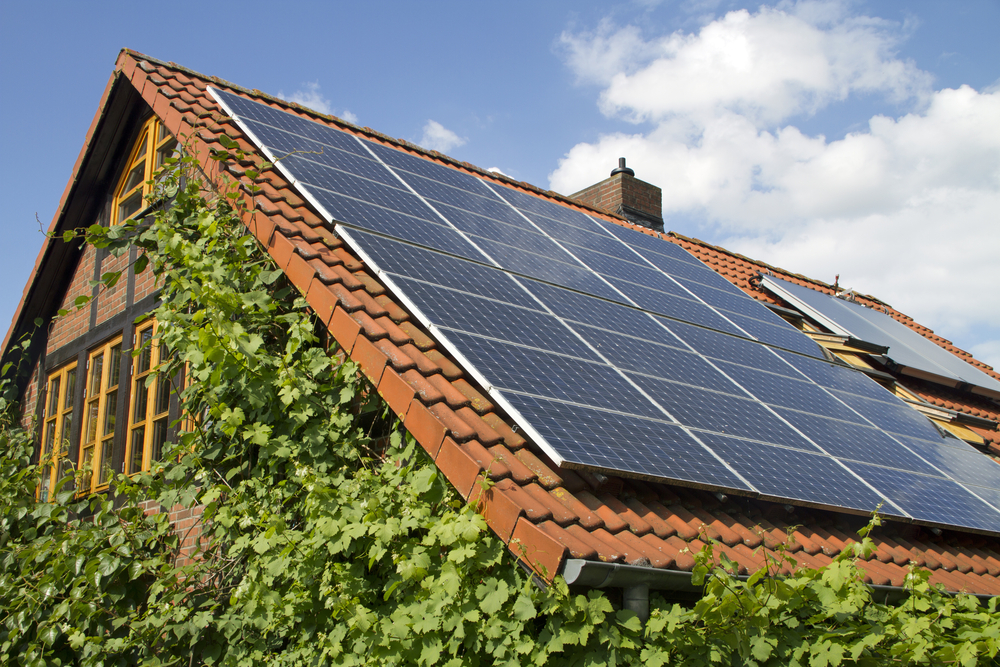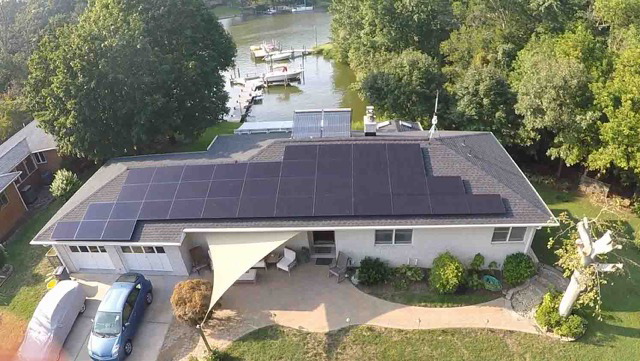 Loading... Please wait...
Loading... Please wait...Products
- Heating and Cooling
- Outdoor Living & Patio
- Solar Kits
- Solar Products
- Solar Panels
- Solar Panel Kits
- Solar Generators
- Inverters
- Inverter Monitoring
- Inverter Accessories
- Balance of Systems
- Racking and Mounting
- Rails
- Flashings
- Splice Kits
- Stopper Sleeves
- Conduit Mounts
- Attachments
- Brace Assembly
- Base Mount
- Brackets
- Bolts
- Clamps
- Caps
- L-Feet
- Washers
- Skirt
- Lugs
- Tilt Legs
- Hooks
- Stand-Offs
- Ballast Bay
- Top of Pole Mount
- Side of Pole Mount
- Flush Mount Kits
- Ground Mount Kits
- Roof Mount Kits
- Hardware Packages
- Wire Management
- Batteries
- Battery Accessories
- Charge Controllers
- Tools and Supplies
- View All Products
Solaris Blog - Learn Solar
Is DIY Solar Worth the Investment in 2019?
Posted by Brandi Casey on 13th Mar 2019
You're thinking about going the DIY solar route and want to know, "Is DIY solar worth it?" That's a good question, so that's why we put together a step-by-step guide to calculating, assessing and designing your system like a pro. So, you know exactly how much you will save before you purchase your home solar power system.
Solar energy has multiple incentives ranging from financial benefits, energy independence, as well as a greener footprint. As solar technology continues to improve, system owners are enjoying greater savings and efficiencies, and with the 30% solar tax credit decreasing at the end of this year, 2019 is a good year to install solar and benefit from the investment. That being said, there are a number of factors to consider when determine if solar is right for you specifically. In order to see if solar is right for you prior to making an investment, your power energy needs have to be accurately addressed and accounted for.
Here, we will outline how to: determine your system size, calculate the square footage of your array, estimate your annual energy production, and outline your additional options for saving with solar.
In order to best outline this information, we will use the “Watson Residence” in our example system. *Note: These figures are based on estimates and averages, your site conditions, array angle, system components and other possible factors.
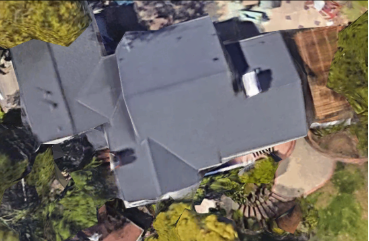
*Watson Residence
| Average Annual kWh | Solar System Size | Square Footage of System | Annual Average Solar Radiation | Annual Energy Production |
| 17,750 kWh/year | ~12 kW | 785.21125 ft² | 1,460 kWh/kWp | 18,104 kWh/year |
Part I: How to Calculate Your System Size
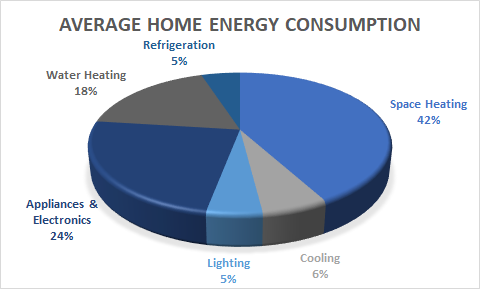
Oftentimes novice system designers will reference the square footage of their home, or their energy bill when inquiring about what size system they need. It is difficult to measure the system size based on these details because they are far to general. In terms of your home’s square footage, that does not account for how much energy the home is using on a monthly basis. Two homes the same size could have wildly different energy demands due to their overall usage, appliances, lifestyle, etc. Likewise, rates per kilowatt hour vary greatly with some utilities charging as little as $0.08/kWh and as much as $0.22/kWh. So, what is the best way to size your array? Pull out your energy bills, because it is time to calculate your average kilowatt hours.
How do you calculate your average kilowatt hours?
Simply take the last 6-12 months of utility bills for your property and average them to calculate your average kilowatt hours (kWh) per month. To find your average, add all kWh figures together, then divide buy the number of months (in this case, we will be dividing by a full year).
If you only have seven months of energy bills to reference, you will be dividing your kWh by seven rather than twelve.We recommend that you use a full year to get the most accurate measurement of your energy needs. Energy consumption varies depending on what is being run in the home and is mostly affected by seasonal changes when bigger appliances are being used. As outlined above, space heating typically takes up the most energy, followed by appliances and electronics.
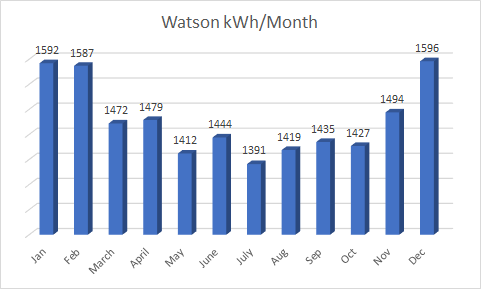
Total kWh =17,748 kWh
(kWh) / (12 months) = Average kWh/month
17,748 kWh/ 12 months = 1,479 average kWh/month
The next step in determining your system size is to find your expected annual kWh.
How do you determine your kWh/year?
While you can calculate your system size off of your total annual kWh. However, it is recommended that you use your average kWh per month to calculate your system size. Taking this figure makes it more likely that you will size out a system that will cover your total monthly energy on the months that you use the most energy (for example in winter when the heat is running). Notice that the Watson residence total kWh and average kWh is quite close (this is not the case in all systems). Areas with more extreme winter weather are likely to see greater disparity between their winter kWh and summer kWh, averaging the system helps to ensure you can meet your energy needs during peak times, while also ensuring that your system is not too large.
Take your average kWh figure that we just calculated above and multiply that number by 12 months. In the case of the Watson residence, the number we need to multiply is 1,479 kWh.
(kWh) x (12 months) = kWh/yr
1,479 kWh x 12 months = 17,750 kWh/year
In order to cover the majority, or 100% of their solar energy system, the Watson's will need a system that generate at least 17,750 kWh/year. Next, we will convert the Watson's kilowatt hours to kilowatts.
How do you determine your solar system size in kilowatts (kW)?
*Sun Hours/Day Zone Map
Use the following formula and map to calculate your recommended system size. (Read more about sizing your solar energy system.)
Array Size (kW) = (Annual kWh usage) / (365 days/year) / (Solar Hours/day) / (0.82 derate factor) = kW
Based off the solar zone map above, the Watson’s live in California in Zone 3, which has 5 peak hours.
(17,750 kWh/yr) / (365 days/year) / (5 solar hours/day)/ (0.82 derate factor) = 11.86 kW or approximately 12 kW
Solaris Tip: If you have not moved into the property or do not have utility bills to reference, research the average kilowatt hours used for similar homes in the area. Your city planning office will likely have this information on file.
Part II: Determine Square Footage of Your Array

*Watson Residence Layout
After the approximate size of your system is determined, it is time to start putting together the bill of materials for your project. In order to determine the square footage of your roof, you have to design your solar array by first selecting your modules, then designing your racking system. (To get an idea of what to look for in solar modules, read about solar panel ratings.)
For the Watson’s system we will be using IronRidge UFO and XR100 racking components using forty high-watt Canadian Solar CS3K-310MS modules for a total system size of 12.4kW.
As shown in the above design, the size of the system is 36’3” by 21’8” to calculate the square footage, simply multiply the width and height.
(Length) x (Width) = Feet Squared
36.25 x 21.661 = 785.21125 ft²
The square footage can be helpful in determining the efficiency of your energy system, and in estimate calculators for your area. Although the above design highlights roof mount systems, calculating the square footage for ground mount systems uses the same formula.
Solaris Tip: You can design your solar racking system using free tools online such as the IronRidge design tool. Other design tools can be found by performing a quick search for the manufacturer name and design tool, for example “SnapNrack design tool”.
Part III: How to Calculate the Annual Energy Production of Your Solar System
*12.5kW Solar Array
In order to calculate your systems expected annual energy production you must calculate your annual average solar radiation (kWh/kWp) (kWp = kilowattpeak). This value describes the energy production of your system that is achieved under full solar radiation. Under Standard Test Conditions (STC), solar radiation is calculated every 1,000 watts per square foot/meter.
Annual Average Solar Radiation and Energy Production
Recall that the Watson’s Zone 3 home has 5 standard sun hours, to find their kilowatt hours per year, we multiply their sun hours by 365 days.
(Sun Hours) x (365 days) x (Efficiency [currently allowed at 80%])
5 standard hours x 365 days x 0.80 = 1,460 kWh/kWp
We can now calculate the Watson’s expected system output by multiplying the size of the system (kW) by the above energy production per peak capacity noted above.
(kW) x (kWh/kWp) = kWh/yr
12.4kW x 1,460 kWh/kWp = 18,104 kWh/yr
You may notice that the system output is higher than the Watson’s estimated 17,750 kWh/yr noted earlier. This is preferable as it is better to over-size your system rather than under-size if you are looking for 100% energy coverage, as well as covering module efficiency loss over time.
Calculating Energy Savings
Calculating your expected energy savings is useful for two reasons. First, it provides you with an overview on how much solar can save you directly on a yearly basis for your energy bill. Second, it offers another method of checking to see if your energy needs are going to be met. If your goal is to offset all of your electricity and be free from monthly energy bills and the figure calculated below does not do that, you may want to consider changing out components, the design or adding a couple more panels to the system. By estimating your average savings with your system, you can more accurately measure your ROI and whether solar is right for you.
We will average out the Watson’s energy bill $0.16/kWh to determine their expected yearly savings with the following formula.
(kWh/yr) x (price per kWh) = Energy Savings
18,104 kWh/yr x $0.16 /kWh = $2,896.64 (first year)
Compare this figure with what you are currently paying for electricity on an annual basis. This figure can be used when calculating your expected ROI period and should be used in conjunction with manufacturer warranties (read about panel warranties). Additionally, ask yourself how you are paying for the system and account for financing charges if applicable.
Part IV: Additional Cost Savings
Do it yourself (DIY) installations have the potential to save you a great deal of money. Installation projects typically cost between $2,000 - $5,000 more than DIY installs when working with large installers. This figure can increase if there is a high markup on equipment, the company and your location.
If you are comfortable installing your system yourself, keep in mind you will still need a certified electrician to sign on off on the system before the it can be turned on. If you do not want to install the system yourself, you can still save money by supplying your own materials with your installer. You can save a great deal of money by taking the time to gather quotes and exploring all your installation options.
Furthermore, there are a number of steps that you can take when designing your system to lower your initial investment and shorten your ROI period. Start by asking yourself a few questions.
Should you purchase your system outright?
When you purchase your system outright, you take advantage of a shorter ROI period, and a higher return over the long-term life of your solar energy system. Options such as leasing or loaning a system have distinct financial benefits in and of themselves, however, this option provides the maximum value for your investment.
Do you have any special site conditions?
Site conditions that could potentially inhibit the system from producing energy consistently should be discussed and accounted for prior to any system purchase. For example, if your roof has shading issues it is better to use Enphase microinverters or SolarEdge inverters with optimizers rather than a single inverter. (Read about the best solar inverters on the market today.)
Should you contact your local utility company and government office?
Yes, before starting your project be sure to contact your city permitting offices and utilities to get a list of requirements for going solar in your area. This can save on costly adjustments in the future, some examples of this include: permit design changes, sub-panel requirements (avoidance of costly upgrades), equipment requirements, and more.
What rebates and incentives are available in your area?
Credits such as the Federal Solar Tax Credit are not the only incentive offered to solar system owners. There are a number of local and state incentives that can be taken advantage of as well. (Read more about tax credits.) Additionally, check into your utilities policies regarding net metering, (quick guide to net metering).
Solaris Tip: Higher watt modules (panels above 300 watts), have become an industry norm. High watt modules can save you a great deal of money in both equipment and installation costs. Additionally, if you plan on adding onto your system in the future, we recommend new series and models over older series to ensure that the modules will still be available when you add on.
Conclusion
As outlined above, there are a myriad of factors that need to be considered when going solar, many of them involve paying close attention to current energy consumption and working towards your future energy goals. Although overall system cost should be accounted for when calculating your ROI, it is important to explore the warranty period of all components as well as their overall efficiency ratings. Additionally, each project is unique in some way, it is important to take the time to plan your system and utilize available resources so you purchase a system that will work for you.


